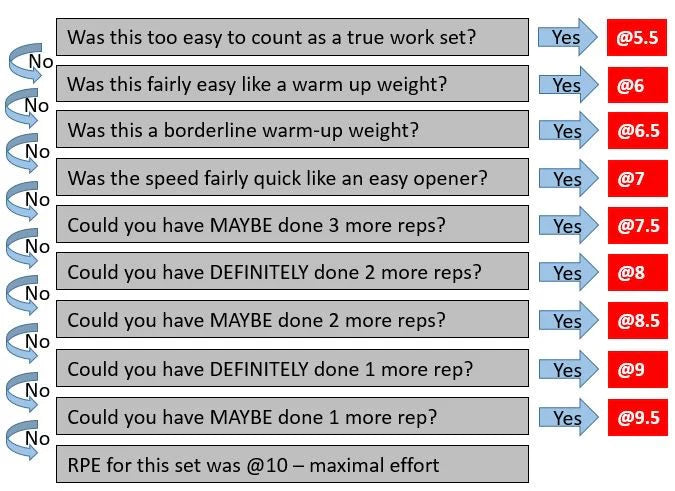
Decoding RPE: The Smarter Way to Train for Powerlifters
In the powerlifting world, you'll often hear of two main methods for programming training intensity: based on a percentage (%) of your one-rep max (1RM) and based on RPE. While percentage-based training provides a clear structure, RPE (Rate of Perceived Exertion) offers invaluable flexibility and autoregulation. Understanding and applying RPE correctly can be a game-changer, helping you train more effectively, manage fatigue better, and make sustainable progress.
What is RPE and How Does It Work?
RPE is a subjective scale used to rate the difficulty of a training set, typically measured on a scale of 1 to 10. In strength training, RPE is intrinsically linked to the concept of RIR (Reps in Reserve). RIR is simply how many more repetitions you believe you could have performed with good technique at the end of a set.
According to guidance from Boostcamp, the relationship between RPE and RIR is as follows:
-
RPE 10: Maximal effort. You could not have done another rep (0 RIR).
-
RPE 9: Very hard. You could have done 1 more rep (1 RIR).
-
RPE 8: Hard. You could have done 2 more reps (2 RIR).
-
RPE 7: Moderately hard. You could have done 3 more reps (3 RIR).
-
RPE 6 & Below: Relatively easy, often used for warm-ups or recovery work.
For example: If your program calls for "Squat 5 reps @ RPE 8," it means you should select a weight that, after performing 5 reps, you feel you could have done exactly 2 more reps with good form.

The Benefits of RPE-Based Training
Why should you care about RPE? Because it allows for autoregulation.
-
Adapts to Daily Fluctuations: Your strength is not constant. On a day you've slept well, eaten enough, and have low stress, you'll feel stronger. Conversely, a bad day can make you weaker. Rigid percentage-based training doesn't account for this. RPE allows you to automatically adjust the weight on the bar to match how you feel on that specific day. On a good day, your @ RPE 8 will be heavier. On a bad day, it will be lighter.
-
Manages Fatigue More Effectively: By preventing you from having to grind out excessively heavy weights on off-days, RPE helps you manage accumulated fatigue, reducing the risk of overtraining and injury.
-
Increases Self-Awareness: Using RPE forces you to listen to your body and become more attuned to its signals. Over time, you'll get much better at gauging your capabilities, an invaluable skill for any athlete.
-
Optimizes the Training Stimulus: RPE ensures you're training at the right intensity to produce the desired adaptation (strength, hypertrophy) rather than just hitting arbitrary numbers on a spreadsheet.

How to Accurately Judge RPE
Judging RPE is a skill that takes time to develop. Here are some tips:
-
Be Honest With Yourself: This is the most important rule. Don't let your ego dictate the RPE. If a set felt like an RPE 9, record it as an RPE 9, even if you wanted it to be an RPE 7.
-
Focus on RIR: Always ask yourself, "With perfect form, how many more reps could I have really done?"
-
Use Bar Speed as a Cue: The speed of your final reps in a set is a good indicator. If your last rep slowed down significantly, you were likely approaching RPE 9-10.
-
Record and Review: Film your heavy sets and watch them back. Sometimes a set looks easier than it felt, or vice-versa. This helps you calibrate your perception.
-
Practice: The only way to get better at judging RPE is to practice it consistently in your training.
Applying RPE to Your Powerlifting Program
RPE can be integrated into your program in several ways:
-
Top Sets: The program might call for you to work up to a single top set at a specific RPE. For example: "Bench Press 1 set x 3 reps @ RPE 9." You would pyramid up in weight until you find the load for 3 reps where you feel you only have 1 rep left in the tank.
-
Back-off Sets: After your top set, you might perform back-off sets by taking a percentage drop and performing them at a specific RPE. For example: "After top set, drop 5-10% and perform 3 sets x 5 reps @ RPE 8."
-
RPE Stops: Another method is to perform sets with a fixed weight until your RPE reaches a predetermined stop. For example: "Perform sets of 5 with 100kg until you hit RPE 9."
-
Tracking Progress: Progress with RPE is measured by either lifting more weight for the same RPE and reps, or performing more reps with the same weight and RPE.
RPE vs. Percentage (%): The Best of Both Worlds
You don't have to choose one or the other. Many modern, effective powerlifting programs combine both methods.
For instance, a program might use percentages to dictate a weight range for the day's working sets, and then use RPE to fine-tune the final weight or to prescribe the number of reps on an AMRAP (As Many Reps As Possible) set. This provides both structure and flexibility.
RPE is not a magic bullet, but it is an incredibly powerful method for personalizing your training and making smarter decisions in the gym. By learning to listen to your body and autoregulate your effort, you'll be better able to manage fatigue, prevent injuries, and build strength more sustainably. Start incorporating RPE into your training and see the difference that "training smarter, not just harder" can make.
Do you use RPE in your training? Share your experience in the comments! To learn more about powerlifting training programs, visit sbdlife.net.








